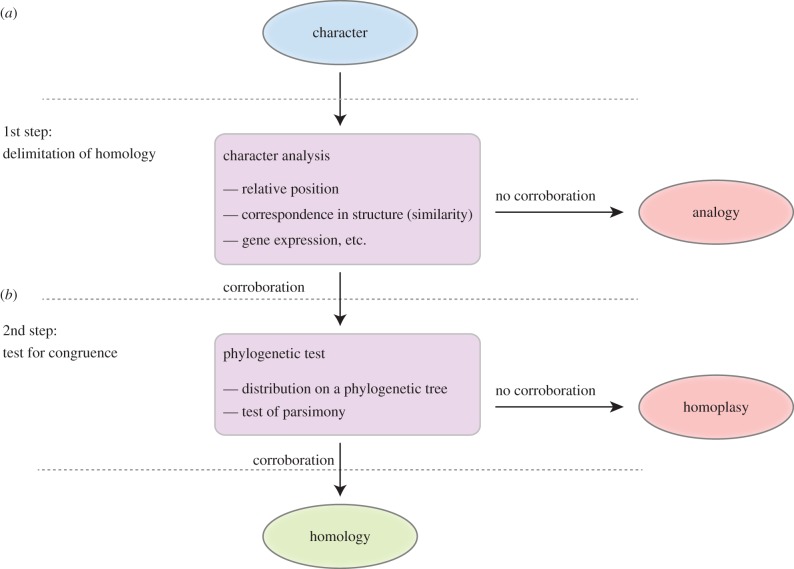Figure 2.
General procedure for testing homology hypotheses. The test of homology is a two-step process in which the homology hypothesis has to pass two definite tests. After the definition of the character, the character is analysed according to criteria such as relative position, correspondence in structure, similarity (but see [112,113]) and ontogeny (a) (but see [114–116]). When corroborated, this leads to the formulation of the ‘primary homology’ [117] or ‘potential homology’ [118] hypothesis, otherwise the character is an analogy [113]. In a second step (b), the homology hypothesis is tested for congruence using a phylogenetic (‘cladistic’) test for parsimony on the basis of a phylogeny. If the homology hypothesis fails this test, it is a homoplasy. Drawing modified after Rieppel [40] and Richter [119].

